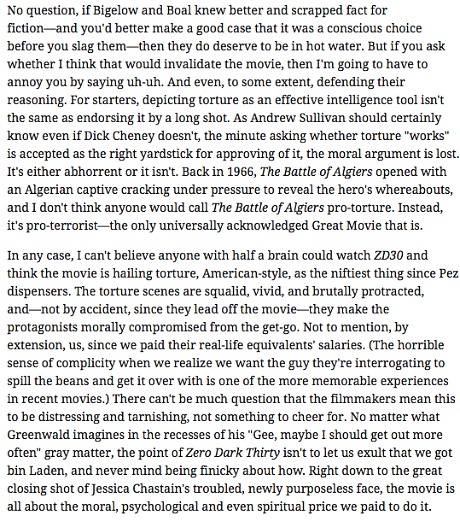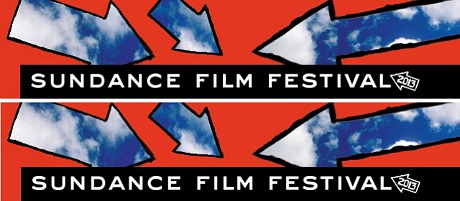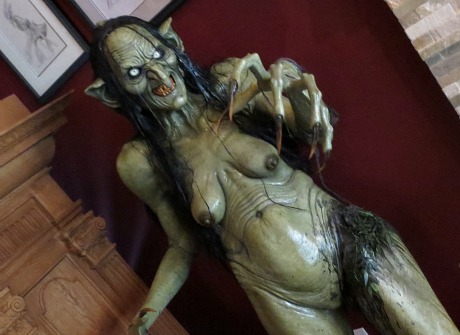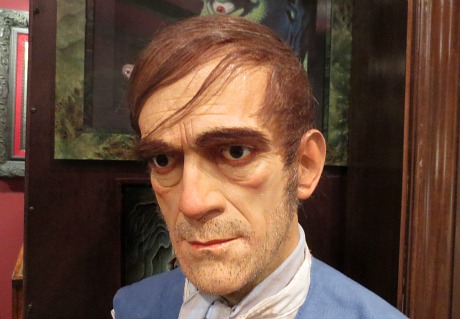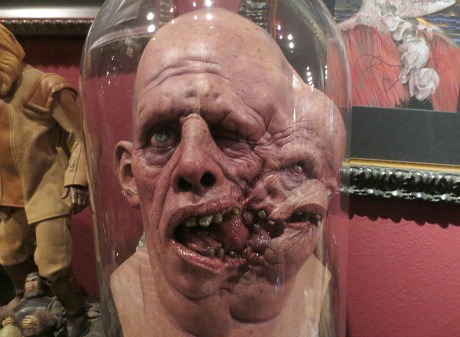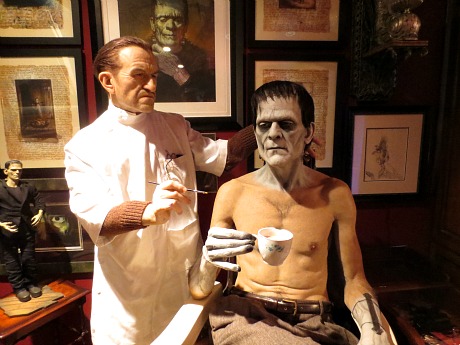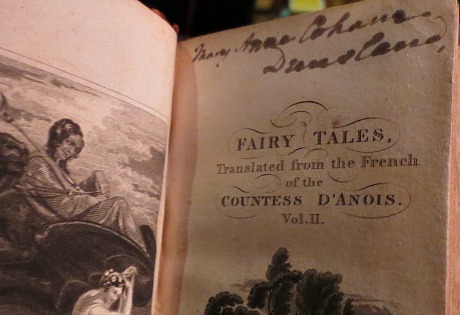There are 57 films I’d like to see at the 2013 Sundance Film Festival. 12 Premieres, 19 documentaries under three programs, 13 or 14 in Dramatic Competition, 8 World Cinema entries, 4 Next pics and 2 or 3 stragglers . I always see at least three per day and sometimes four. But over nine or ten days I rarely see more than 28 or 30. I have to write for five or six hours, and eat and sleep. Plus the occasional social pit stop, party or interview.
One way or another I have to prune the list down to 30 or thereabouts. So you have to be cruel at this stage of the game. You have to poke around and ask questions and listen, but you need to get out the machete and say “nope, eff that.” All bets are off, as always, if somebody comes along during the festival and says, “No, no, really…you have to see this.” Everything is negotiable.
I’m starting, in any event, with films I’ve lazily labelled as COMFORT and POSSIBLE GOODIES, and then I’ll deal with the rest. There’s a mad sexual relationship theme going on this year but I won’t let that distract or impair…hah! (All synopses & credits are Sundance-supplied.)
COMFORT (4):
Stoker / U.S.A. (Director: Park Chan-Wook, Screenwriter: Wentworth Miller) — After India’s father dies in an auto accident, her Uncle Charlie comes to live with her and her mother, Evelyn. Soon after his arrival, India suspects that this mysterious, charming man has ulterior motives but becomes increasingly infatuated with him. Cast: Mia Wasikowska, Matthew Goode, Dermot Mulroney, Jacki Weaver, Nicole Kidman.
Inequality for All / U.S.A. (Director: Jacob Kornbluth, dp: Svetlana Cvetko) — In this timely and entertaining documentary, noted economic-policy expert Robert Reich distills the topic of widening income inequality, and addresses the question of what effects this increasing gap has on our economy and our democracy.
Before Midnight / U.S.A. (Director: Richard Linklater, Screenwriters: Julie Delpy, Ethan Hawke, Richard Linklater — We meet Jesse and Celine nine years on in Greece. Almost two decades have passed since their first meeting on that train bound for Vienna. Before the clock strikes midnight, we will again become part of their story. Cast: Ethan Hawke, Julie Delpy, Xenia Kalogeropoulou, Ariane Labed, Athina Rachel Tsangari, Seamus Davey-Fitzpatrick. Linklater, Hawke and Delpy’s two previous “Before” flicks are Before Sunset (’04) and Before Sunrise (’95).
The World According to Dick Cheney / U.S.A. (Directors: R.J. Cutler, Greg Finton) — Dick Cheney is the most powerful, most controversial and in his words, “most consequential” Vice President in American history. This dramatic and intimate examination of Cheney’s life, career, relationships and worldview features interviews with Cheney and those closest to him.
POSSIBLE GOODIES in no particular order (10):
Prince Avalanche / U.S.A. (Director and screenwriter: David Gordon Green) — Two highway road workers spend the summer of 1988 away from their city lives. The isolated landscape becomes a place of misadventure as the men find themselves at odds with each other and the women they left behind. Cast: Paul Rudd, Emile Hirsch.
jOBS / U.S.A. (Director: Joshua Michael Stern, Screenwriter: Matt Whiteley) — The true story of one of the greatest entrepreneurs in American history, jOBS chronicles the defining 30 years of Steve Jobs’ life. jOBS is a candid, inspiring and personal portrait of the one who saw things differently. Cast: Ashton Kutcher, Dermot Mulroney, Josh Gad, Lukas Haas, J.K. Simmons, Matthew Modine.
We Steal Secrets: The Story of WikiLeaks / U.S.A. (Director: Alex Gibney) — The definitive story of Julian Assange, Bradley Manning and WikiLeaks, We Steal Secrets explores the people and events behind the upstart website that rocked the U.S. government, ushered in a new era of transparency and ignited an information war. (Documentary)
Don Jon’s Addiction / U.S.A. (Director and screenwriter: Joseph Gordon-Levitt) — In Joseph Gordon-Levitt’s charming directorial debut, a selfish modern-day Don Juan attempts to change his ways. Cast: Joseph Gordon-Levitt, Scarlett Johansson, Julianne Moore, Tony Danza, Glenne Headly, Rob Brown.
The Look of Love / United Kingdom (Director: Michael Winterbottom, Screenwriter: Matt Greenhalgh) — The true story of British adult magazine publisher and entrepreneur Paul Raymond. A modern day King Midas story, Raymond became one of the richest men in Britain at the cost of losing those closest to him. Cast: Steve Coogan, Anna Friel, Imogen Poots, Tamsin Egerton.
Very Good Girls / U.S.A. (Director and screenwriter: Naomi Foner) — In the long, half-naked days of a New York summer, two girls on the brink of becoming women fall for the same guy and find that life isn’t as simple or safe as they had thought. Cast: Dakota Fanning, Elizabeth Olsen, Boyd Holbrook, Demi Moore, Richard Dreyfuss, Ellen Barkin.
The Spectacular Now / U.S.A. (Director: James Ponsoldt (Smashed), Screenwriters: Scott Neustadter, Michael H. Weber) — Sutter is a high school senior who lives for the moment; Aimee is the introvert he attempts to “save.” As their relationship deepens, the lines between right and wrong, friendship and love, and “saving” and corrupting become inextricably blurred. Cast: Miles Teller, Shailene Woodley, Brie Larson, Jennifer Jason Leigh, Mary Elizabeth Winstead, Kyle Chandler.
History of the Eagles, Part 1 / U.S.A. (Director: Alison Ellwood) — Using never-before-seen home movies, archival footage and new interviews with all current and former members of the Eagles, this documentary provides an intimate look into the history of the band and the legacy of their music.
The Summit / Ireland, United Kingdom (Director: Nick Ryan) — Twenty-four climbers converged at the last stop before summiting the most dangerous mountain on Earth. Forty-eight hours later, 11 had been killed or simply vanished. Had one, Ger McDonnell, stuck to the climbers’ code, he might still be alive. International Premiere.
Citizen Koch / U.S.A. (Directors: Carl Deal, Tia Lessin) — Wisconsin — birthplace of the Republican Party, government unions, “cheeseheads” and Paul Ryan — becomes a test market in the campaign to buy Democracy, and ground zero in the battle for the future of the GOP. (Documentary)
HEIGHTENED, SLIGHTLY GUARDED INTEREST (4):
In a World… / U.S.A. (Director and screenwriter: Lake Bell) — An underachieving vocal coach is motivated by her father, the king of movie-trailer voice-overs, to pursue her aspirations of becoming a voiceover star. Amidst pride, sexism and family dysfunction, she sets out to change the voice of a generation. Cast: Lake Bell, Demetri Martin, Rob Corddry, Michaela Watkins, Ken Marino, Fred Melamed.
Pussy Riot — A Punk Prayer / Russian Federation, United Kingdom (Directors: Mike Lerner, Maxim Pozdorovkin) — Three young women face seven years in a Russian prison for a satirical performance in a Moscow cathedral. But who is really on trial: the three young artists or the society they live in? World Premiere.
Lasting / Poland, Spain (Director and screenwriter: Jacek Borcuch) — An emotional love story about two Polish students who fall in love with each other while working summer jobs in Spain. An unexpected nightmare interrupts their carefree time in the heavenly landscape and throws their lives into chaos. Cast: Jakub Gierszal, Magdalena Berus, Angela Molina. World Premiere.
Wajma (An Afghan Love Story) / Afghanistan (Director and screenwriter: Barmak Akram) — A young man in Kabul seduces a girl. When she tells him she’s pregnant, he questions having taken her virginity. Then her father arrives, and a timeless, archaic violence erupts — possibly leading to a crime, and even a sacrifice. Cast: Wajma Bahar, Mustafa Abdulsatar, Haji Gul, Breshna Bahar. World Premiere.
RISKY, DICEY, BAD-CONSEQUENCE SEX (9):
Lovelace / U.S.A. (Directors: Rob Epstein, Jeffrey Friedman, Screenwriter: Andy Bellin) — Deep Throat, the first pornographic feature film to be a mainstream success, was an international sensation in 1972 and made its star, Linda Lovelace, a media darling. Years later the “poster girl for the sexual revolution” revealed a darker side to her story. Cast: Amanda Seyfried, Peter Sarsgaard, Hank Azaria, Adam Brody, James Franco, Sharon Stone.
Concussion / U.S.A. (Director and screenwriter: Stacie Passon) — After a blow to the head, Abby decides she can’t do it anymore. Her life just can’t be only about the house, the kids and the wife. She needs more: she needs to be Eleanor. Cast: Robin Weigert, Maggie Siff, Johnathan Tchaikovsky, Julie Fain Lawrence, Emily Kinney, Laila Robins.
Touchy Feely / U.S.A. (Director and screenwriter: Lynn Shelton) — A massage therapist is unable to do her job when stricken with a mysterious and sudden aversion to bodily contact. Meanwhile, her uptight brother’s foundering dental practice receives new life when clients seek out his “healing touch.” Cast: Rosemarie DeWitt, Allison Janney, Ron Livingston, Scoot McNairy, Ellen Page, Josh Pais.
Two Mothers / Australia, France (Director: Anne Fontaine, Screenwriter: Christopher Hampton) — This gripping tale of love, lust and the power of friendship charts the unconventional and passionate affairs of two lifelong friends who fall in love with each other’s sons. Cast: Naomi Watts, Robin Wright, Xavier Samuel, James Frechevile.
It Felt Like Love / U.S.A. (Director and screenwriter: Eliza Hittman) — On the outskirts of Brooklyn, a 14-year-old girl’s sexual quest takes a dangerous turn when she pursues an older guy and tests the boundaries between obsession and love. Cast: Gina Piersanti, Giovanna Salimeni, Ronen Rubinstein, Jesse Cordasco, Nick Rosen, Case Prime.
Afternoon Delight / U.S.A. (Director and screenwriter: Jill Soloway) — In this sexy, dark comedy, a lost L.A. housewife puts her idyllic life in jeopardy when she tries to rescue a stripper by taking her in as a live-in nanny. Cast: Kathryn Hahn, Juno Temple, Josh Radnor, Jane Lynch.
The Lifeguard / U.S.A. (Director and screenwriter: Liz W. Garcia) — A former valedictorian quits her reporter job in New York and returns to the place she last felt happy: her childhood home in Connecticut. She gets work as a lifeguard and starts a dangerous relationship with a troubled teenager. Cast: Kristen Bell, Mamie Gummer, Martin Starr, Alex Shaffer, Amy Madigan, Joshua Harto.
A Teacher / U.S.A. (Director and screenwriter: Hannah Fidell) — A popular young teacher in a wealthy suburban Texas high school has an affair with one of her students. Her life begins to unravel as the relationship comes to an end. Cast: Lindsay Burdge, Will Brittain, Jennifer Prediger, Jonny Mars, Julie Phillips, Chris Dubeck.
Milkshake / U.S.A. (Director: David Andalman, Screenwriters: David Andalman, Mariko Munro) — In mid-1990’s America, we follow the tragic sex life of Jolie Jolson, a wannabe thug (and great-great-grandson of legendary vaudevillian Al Jolson) in suburban DC as he strives to become something he can never be — black. Cast: Tyler Ross, Shareeka Epps, Georgia Ford, Eshan Bay, Leo Fitzpatrick, Danny Burstein.Domingo, Isiah Whitlock Jr., Adrian Martinez.
VAGUELY AFRAID OF THESE (6):
The Way, Way Back / U.S.A. (Directors and screenwriters: Nat Faxon, Jim Rash) — Duncan, an introverted 14-year-old, comes into his own over the course of a comedic summer when he forms unlikely friendships with the gregarious manager of a rundown water park and the misfits who work there. Cast: Steve Carell, Toni Collette, Allison Janney, Sam Rockwell, Maya Rudolph, Liam James.
Ain’t Them Bodies Saints / U.S.A. (Director and screenwriter: David Lowery) — The tale of an outlaw who escapes from prison and sets out across the Texas hills to reunite with his wife and the daughter he has never met. Cast: Rooney Mara, Casey Affleck, Ben Foster, Nate Parker, Keith Carradine.
Breathe In / U.S.A. (Director: Drake Doremus, Screenwriters: Drake Doremus, Ben York Jones) — When a foreign exchange student arrives in a small upstate New York town, she challenges the dynamics of her host family’s relationships and alters their lives forever. Cast: Guy Pearce, Felicity Jones, Amy Ryan, Mackenzie Davis.
The East / U.S.A. (Director: Zal Batmanglij, Screenwriters: Zal Batmanglij, Brit Marling) — An operative for an elite private intelligence firm goes into deep cover to infiltrate a mysterious anarchist collective attacking major corporations. Bent on apprehending these fugitives, she finds her loyalty tested as her feelings grow for the group’s charismatic leader. Cast: Brit Marling, Alexander Skarsgård, Ellen Page, Toby Kebbell, Shiloh Fernandez, Patricia Clarkson.
C.O.G. / U.S.A. (Director and screenwriter: Kyle Patrick Alvarez) — In the first ever film adaptation of David Sedaris’ work, a cocky young man travels to Oregon to work on an apple farm. Out of his element, he finds his lifestyle and notions being picked apart by everyone who crosses his path. Cast: Jonathan Groff, Denis O’Hare, Corey Stoll, Dean Stockwell, Casey Wilson, Troian Bellisario.
Emanuel and the Truth About Fishes / U.S.A. (Director and screenwriter: Francesca Gregorini) — Emanuel, a troubled girl, becomes preoccupied with her mysterious, new neighbor, who bears a striking resemblance to her dead mother. In offering to babysit her newborn, Emanuel unwittingly enters a fragile, fictional world, of which she becomes the gatekeeper. Cast: Kaya Scodelario, Jessica Biel, Alfred Molina, Frances O’Connor, Jimmi Simpson, Aneurin Barnard.
NOT THIS TIME:
Top of the Lake / Australia, New Zealand (Directors: Jane Campion, Garth Davis, Screenwriters: Jane Campion, Gerard Lee) — A 12-year-old girl stands chest deep in a frozen lake. She is five months pregnant, and won’t say who the father is. Then she disappears. So begins a haunting mystery that consumes a community. Cast: Elisabeth Moss, Holly Hunter, Peter Mullan, David Wenham. This six-hour film will screen once during the Festival. Wells comment: It couldn’t be cut to three or four hours? C’mon.
RECORDING STUDIOS (2):
Sound City / U.S.A. (Director: Dave Grohl) — Through interviews and performances with the legendary musicians and producers who worked at America’s greatest unsung recording studio, Sound City, we explore the human element of music, and the lost art of analog recording in an increasingly digital world.
Muscle Shoals / U.S.A. (Director: Greg ‘Freddy’ Camalier) — Down in Alabama Rick Hall founded FAME Studios and gave birth to the Muscle Shoals sound. Mick Jagger, Keith Richards, Gregg Allman, Aretha Franklin, Etta James, Alicia Keys, Bono and others bear witness to the greatest untold American music story. World Premiere.
WORK IN PROGRESS:
Wrong Cops / U.S.A. (Director and screenwriter: Quentin Dupieux) — Imagine a Los Angeles where crime is so low that a bored cop sells drugs and harasses a teenager to pass the time. Shot in standalone chapters, as it is being financed, screened and released, watch the 45 minutes of crazy. Cast: Mark Burnham, Marilyn Manson, Steve Little, Eric Wareheim.
DOC PREMIERES & COMPETITION in order of interest (8):
Anita / U.S.A. (Director: Freida Mock) — Anita Hill, an African-American woman, charges Supreme Court nominee Clarence Thomas with sexual harassment in explosive Senate hearings in 1991, bringing sexual politics into the national consciousness and fueling 20 years of international debate on the issues.
Running from Crazy / U.S.A. (Director: Barbara Kopple) — Mariel Hemingway, granddaughter of Ernest Hemingway, strives for a greater understanding of her family history of suicide and mental illness. As tragedies are explored and deeply hidden secrets are revealed, Mariel searches for a way to overcome a similar fate.
Which Way Is the Front Line from Here? The Life and Time of Tim Hetherington / U.S.A. (Director: Sebastian Junger) — Shortly after the release of his documentary Restrepo, photographer Tim Hetherington was killed in Libya. Colleague Sebastian Junger traces Hetherington’s work across the world’s battlefields to reveal how he transcended the boundaries of image-making to become a luminary in his profession.
99% — The Occupy Wall Street Collaborative Film / U.S.A. (Directors: Audrey Ewell, Aaron Aites, Lucian Read, Nina Krstic) — The Occupy movement erupted in September 2011, propelling economic inequality into the spotlight. In an unprecedented collaboration, filmmakers across America tell its story, digging into big picture issues as organizers, analysts, participants and critics reveal how it happened and why.
Gideon’s Army / U.S.A. (Director: Dawn Porter) — Doc follows three young, committed Public Defenders who are dedicated to working for the people society would rather forget. Long hours, low pay and staggering caseloads are so common that even the most committed often give up.
Manhunt / U.S.A., United Kingdom (Director: Greg Barker) — Largely or heavily based upon Peter Bergen‘s Manhunt, I presume. This espionage tale goes inside the CIA’s long conflict against Al Qaeda, as revealed by the remarkable women and men whose secret war against Osama bin Laden started nearly a decade before most of us even knew his name. A friend who knows this realm admits that Bergen “has decent sources but his books all revise each other..the previous one, which came out months before raid, said CIA had no clue were Bin Laden was.”
Google and the World Brain / Spain, United Kingdom (Director: Ben Lewis) — In the most ambitious Internet project ever conceived, Google is working to scan every book in the world. Google says it is building a library for mankind. But some are trying to stop it, claiming that Google may have other intentions. World Premiere.
The Square / Egypt, U.S.A. (Director: Jehane Noujaim) — What does it mean to risk your life for your ideals? How far will five revolutionaries go in defending their beliefs in the fight for their nation? World Premiere.
CHICK FLICK: Austenland / U.S.A., United Kingdom (Director: Jerusha Hess, Screenwriters: Jerusha Hess, Shannon Hale) — Thirtysomething, single Jane is obsessed with Mr. Darcy, as played by Colin Firth in Pride and Prejudice. On a trip to an English resort, her fantasies of meeting the perfect Regency-era gentleman become more real than she ever imagined. Cast: Keri Russell, JJ Feild, Bret McKenzie, Jennifer Coolidge, Georgia King, James Callis.
MORE BEAT GENERATION MOVIES! MORE KEROUAC!:
Kill Your Darlings / U.S.A. (Director: John Krokidas, Screenwriters: Austin Bunn, John Krokidas) — An untold story of murder that brought together a young Allen Ginsberg, Jack Kerouac and William Burroughs at Columbia University in 1944, providing the spark that led to the birth of an entire generation – their Beat revolution. Cast: Daniel Radcliffe, Dane DeHann, Ben Foster, Michael C. Hall, Jack Huston, Elizabeth Olsen.
Big Sur / U.S.A. (Director and screenwriter: Michael Polish) — Unable to cope with a suddenly demanding public and battling advanced alcoholism, Jack Kerouac seeks respite in three brief sojourns to a cabin in Big Sur, which reveal his mental and physical deterioration. Cast: Jean-Marc Barr, Kate Bosworth, Josh Lucas, Radha Mitchell, Anthony Edwards, Henry Thomas.
WHICH ONE IS PIGGY?: Toy’s House / U.S.A. (Director: Jordan Vogt-Roberts, Screenwriter: Chris Galletta) — Three unhappy teenage boys flee to the wilderness where they build a makeshift house and live off the land as masters of their own destiny. Or at least that’s the plan. Cast: Nick Robinson, Gabriel Basso, Moises Arias, Nick Offerman, Megan Mullally, Alison Brie.
CURSE OF MICHAEL CERA: Crystal Fairy / Chile (Director and screenwriter: Sebastian Silva) — Jamie invites a stranger to join a road trip to Chile. The woman’s free and esoteric nature clashes with Jamie’s acidic, self-absorbed personality as they head into the desert for a Mescaline-fueled psychedelic trip. Cast: Michael Cera, Gabby Hoffmann, Juan Andres Silva, Jose Miguel Silva, Augustin Silva. World Premiere.
NOT ENOUGH INFO (3):
Mother of George / U.S.A. (Director: Andrew Dosunmu, Screenwriter: Darci Picoult) — A story about a woman willing to do anything and risk everything for her marriage. Cast: Isaach De Bankole, Danai Gurira, Tony Okungbowa, Yaya Alafia, Bukky Ajayi.
May in the Summer / U.S.A., Qatar, Jordan (Director and screenwriter: Cherien Dabis) — A bride-to-be is forced to reevaluate her life when she reunites with her family in Jordan and finds herself confronted with the aftermath of her parents’ divorce. Cast: Cherien Dabis, Hiam Abbass, Bill Pullman, Alia Shawkat, Nadine Malouf, Alexander Siddig.
Upstream Color / U.S.A. (Director and screenwriter: Shane Carruth) — A man and woman are drawn together, entangled in the life cycle of an ageless organism. Identity becomes an illusion as they struggle to assemble the loose fragments of wrecked lives. Cast: Amy Seimetz, Shane Carruth, Andrew Sensenig, Thiago Martins.
WORLD CINEMA DRAMATIC COMPETITION (4):
Circles / Serbia, Germany, France, Croatia, Slovenia (Director: Srdan Golubovic, Screenwriters: Srdjan Koljevic, Melina Pota Koljevic) — Five people are affected by a tragic heroic act. Twenty years later, all of them will confront the past through their own crises. Will they overcome guilt, frustration and their urge for revenge? Will they do the right thing, at all costs? Cast: Aleksandar Bercek, Leon Lucev, Nebojsa Glogovac, Hristina Popovic, Nikola Rakocevic, Vuk Kostic. World Premiere.
Houston / Germany (Director and screenwriter: Bastian Gunther) — Clemens Trunschka is a corporate headhunter and an alcoholic. Drinking increasingly isolates him from his life and leads him away from reality. While searching for a CEO candidate in Houston, his addiction submerges him into his own darkness. Cast: Ulrich Tukur, Garret Dillahunt, Wolfram Koch, Jenny Schily, Jason Douglas, Jens Münchow. World Premiere.
Metro Manila / United Kingdom, Philippines (Director: Sean Ellis, Screenwriters: Sean Ellis, Frank E. Flowers) — Seeking a better life, Oscar and his family move from the poverty-stricken rice fields to the big city of Manila, where they fall victim to various inhabitants whose manipulative ways are a daily part of city survival. Cast: Jake Macapagal, John Arcilla, Althea Vega. World Premiere.
There Will Come a Day / Italy, France (Director: Giorgio Diritti, Screenwriters: Giorgio Diritti, Fredo Valla, Tania Pedroni) — Painful issues push Augusta, a young Italian woman, to doubt the certainties on which she has built her existence. On a small boat in the immensity of the Amazon rain forest, she faces the adventure of searching for herself. Cast: Jasmine Trinca, Anne Alvaro, Pia Engleberth. World Premiere.


